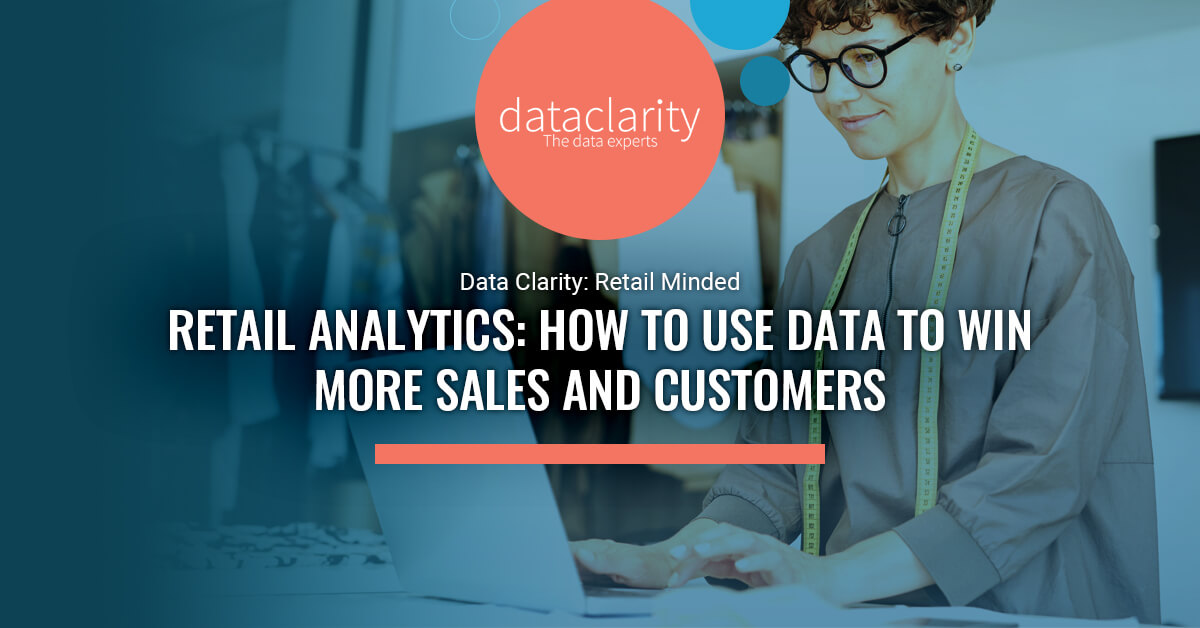Retail Analytics: How to Use Data to Win More Sales and Customers
23rd November 2022
The key to achieving retail success is to be more data centric. The quantity of data that is available allows businesses to better understand their customers, competitors, and future trends.
Today, big data is transforming marketing and retail sales in ways that were not achievable just a few years ago. It has changed the way these teams engage with customers by allowing businesses to make smarter decisions, as a result, this helps to increase profits and customer satisfaction.
Those who are already using a data strategy to find new ways to engage with customers, new opportunities for efficiency, stay ahead of the trend curse, and maximise the cost-effectiveness of their marketing efforts will have a better basis on which to make important business decisions based on the data generated.
Throughout this article, we will broaden your understanding of Big Data, and how the use of Big Data is a powerful benefit for the retail industry.
The Power of Big Data in Retail
According to McKinsey, big data analytics in a retail chain can improve the operating margin by around 60%.
Big data describes a large volume of data that is used to reveal patterns, trends, and associations, especially relating to a person’s behaviour and interactions.
Historically, this has been broken down into three common factors:
Volume: Huge amount of data driven by business.
Variety: Various types of data from multiple sources – mostly unstructured.
Velocity: The speed at which big data is generated.
Big data gives business users the eyes and ears into marketing and sales initiatives. This provides companies with valuable insights into their customers that can be used to refine marketing campaigns and techniques to increase customer engagement and conversion rates.
For the retail industry, big data means a greater understanding of consumer shopping habits and how to attract new customers. Big data analytics in retail allows companies to create customer recommendations based on their purchase history, resulting in personalised shopping experiences, as well as forecasting trends and making strategic decisions based on market analysis.
From our own research and case studies at Data Clarity, companies using personalised marketing and campaign optimisation increase sales around 40%.
As a result, companies that utilise big data hold a potential competitive advantage over those that don’t since they’re able to make faster and better-informed decisions, provided they use the data effectively.
How Big Data is Transforming Retail Industries
To understand the changing needs of consumers and respond to those needs, retailers must leverage big data strategies based on artificial intelligence and machine learning technologies.
Retailers can benefit from this valuable resource to build better data-driven experiences but to also keep pace with competitors.
However, to attain real value out of data analytics, retailers need to consider aggregating their data across disparate systems into a single, unified view throughout the organisation. Once in place, retailers will gain true insights which will help plan customer retention strategies, including personalised offers, pricing, and stock decisions.
Listed below are significant benefits retailers can implement with the use of data analytics.
Personalising the Customer Experience: Back in 2019, customers expected personalisation from retailers. Big data can create opportunities to provide, anticipate and shape what the customers want. Analysing customer’s data helps in customising discounts and offers for the focused customers. This data is related to purchase and search history, average bill value and frequency of visits to the store. For example, customised SMSs and emails related to offers and discounts are generated through big data analytics.
Predicting Trends: Today, retailers have a wide range of tools available to them to work out what will be the seasons must have products. Trend forecasting algorithms comb social media posts and web browsing habits to work out what’s causing a buzz, and ad buying data is analysed to see what marketing departments will be pushing.
Forecasting Demand: Some algorithms analyse social media and web browsing trends to predict the next big thing in retail. Once there’s an understanding of what product people will be willing to purchase, retailers will then work on understanding the location of where the demand will be. This involves gathering demographic data and economic indicators to build an image of spending habits across the targeted market.
Predicting Spending: One of the most common ways that big data is collected in the retail industry is through loyalty programs. Today, it’s also collected through credit card transactions, IP addresses and user log-ins. As more information is collected, companies can analyse the purchases by consumers to further predict future spending and to create personalised recommendations. For example, over 35% of Amazon sales are generated by recommendation algorithms.
Optimise Pricing: Big data can also help to determine when prices should be dropped, known as ‘mark down’ optimisation. Originally, most retailers reduce prices at the end of the buying season when demand has almost gone. However, analytics has shown that a more gradual reduction in price, from the moment demand starts, generally leads to increased revenues.
Customer Journey Analytics: Big data can help retailers to answer questions like, where are customers looking for product information? Where are we losing them? What are the most effective ways to reach them and compel them to purchase? Maximising satisfaction with customer journeys has the potential to increase customer satisfaction by 20%.
Check out the infographic below for more information on the power of data and how retailers can significantly benefit from this valuable resource.

At Data Clarity, we are on top of the challenges and opportunities this presents for retailers. We conduct data audits for organisations to highlight the current capabilities, strengths, weaknesses, and opportunities.
For more information, contact our experts today.
